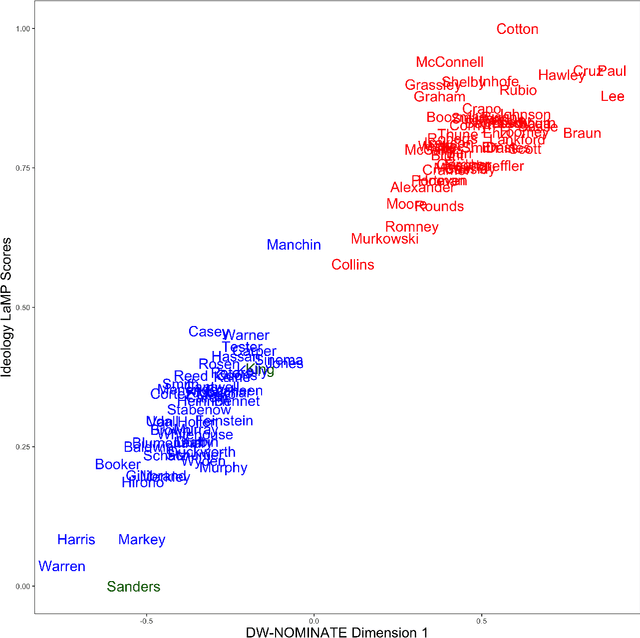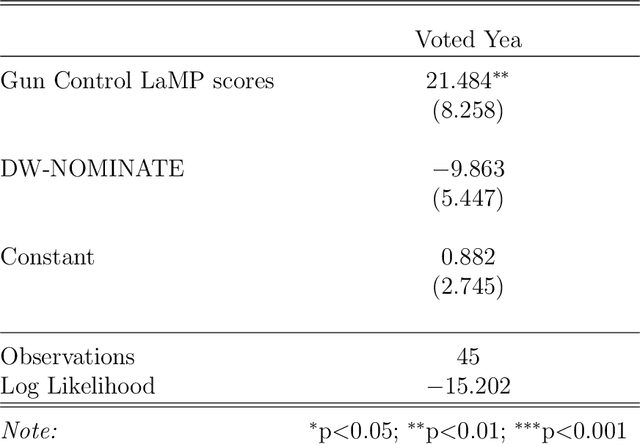Solomon Messing
Concept-Guided Chain-of-Thought Prompting for Pairwise Comparison Scaling of Texts with Large Language Models
Oct 18, 2023Abstract:Existing text scaling methods often require a large corpus, struggle with short texts, or require labeled data. We develop a text scaling method that leverages the pattern recognition capabilities of generative large language models (LLMs). Specifically, we propose concept-guided chain-of-thought (CGCoT), which uses prompts designed to summarize ideas and identify target parties in texts to generate concept-specific breakdowns, in many ways similar to guidance for human coder content analysis. CGCoT effectively shifts pairwise text comparisons from a reasoning problem to a pattern recognition problem. We then pairwise compare concept-specific breakdowns using an LLM. We use the results of these pairwise comparisons to estimate a scale using the Bradley-Terry model. We use this approach to scale affective speech on Twitter. Our measures correlate more strongly with human judgments than alternative approaches like Wordfish. Besides a small set of pilot data to develop the CGCoT prompts, our measures require no additional labeled data and produce binary predictions comparable to a RoBERTa-Large model fine-tuned on thousands of human-labeled tweets. We demonstrate how combining substantive knowledge with LLMs can create state-of-the-art measures of abstract concepts.
Large Language Models Can Be Used to Estimate the Ideologies of Politicians in a Zero-Shot Learning Setting
Mar 22, 2023



Abstract:The mass aggregation of knowledge embedded in large language models (LLMs) holds the promise of new solutions to problems of observability and measurement in the social sciences. We examine the utility of one such model for a particularly difficult measurement task: measuring the latent ideology of lawmakers, which allows us to better understand functions that are core to democracy, such as how politics shape policy and how political actors represent their constituents. We scale the senators of the 116th United States Congress along the liberal-conservative spectrum by prompting ChatGPT to select the more liberal (or conservative) senator in pairwise comparisons. We show that the LLM produced stable answers across repeated iterations, did not hallucinate, and was not simply regurgitating information from a single source. This new scale strongly correlates with pre-existing liberal-conservative scales such as NOMINATE, but also differs in several important ways, such as correctly placing senators who vote against their party for far-left or far-right ideological reasons on the extreme ends. The scale also highly correlates with ideological measures based on campaign giving and political activists' perceptions of these senators. In addition to the potential for better-automated data collection and information retrieval, our results suggest LLMs are likely to open new avenues for measuring latent constructs like ideology that rely on aggregating large quantities of data from public sources.
 Add to Chrome
Add to Chrome Add to Firefox
Add to Firefox Add to Edge
Add to Edge